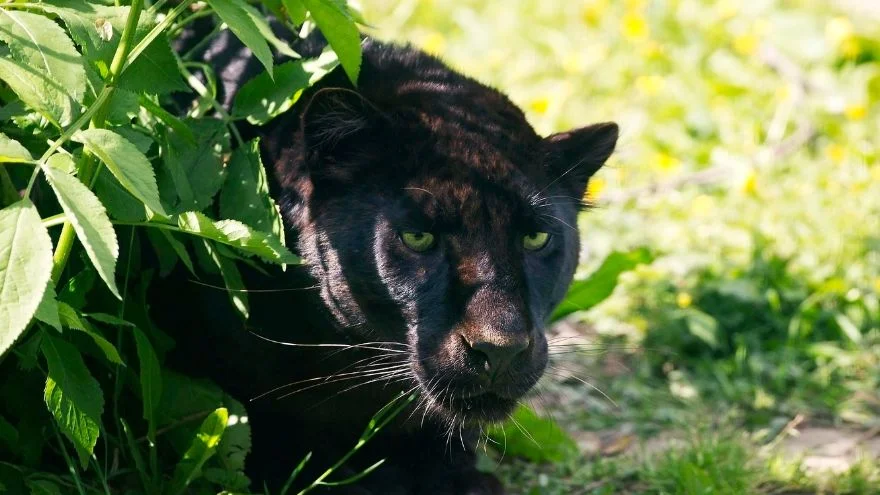The world as we know it consists of various kinds of animals, including predators and prey. These animals, as much as we know, are not always dangerous.
Some are easygoing and wired to feed on plants instead of joining the hunt to feed on other animals.
However, some feed on other animals and are sneaky when hunting.
While some sneaky animals are stealthy by nature, others are sneaky due to their environment. This behavior makes animals, especially those in the wild, able to hunt for prey so that they can remain alive.
What is a Sneaky Animal?
Animals that are sneaky have certain structural or behavioral traits that enable them to hunt prey effectively to provide food for themselves.
A major example of these traits is camouflage. Many stealthy animals camouflage themselves so that their prey will not be able to see them while they hunt.
Some hide in trees and wait, blending perfectly with the color of the tree in a way that their prey can walk past without noticing them.
Read on to discover the 35 sneakiest animals and how they hunt for their prey.
These Sneaky Animals are the Stealthiest You’ll Ever Meet
1. Alligator Gar
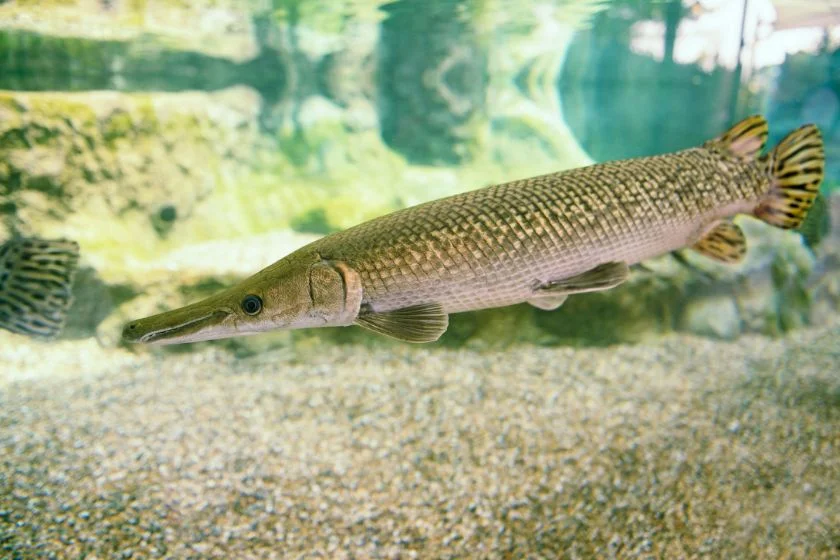
- Scientific name: Aractosteus spatula
- Classification: Fish
- Habitat: Aquatic
- Diet: Carnivore
- Where found: North and Central America
Alligator Gar is a type of fish found in North and Central America; it is carnivorous.
The alligator gar is a sly animal because it disguises its presence from both prey and predator by using its tail to create waves in the murky water where it resides.
When it hunts for prey, it hides its slender body easily in its habitat, making it stealthy enough to sneak up on other animals.
2. Alligator Snapping Turtle
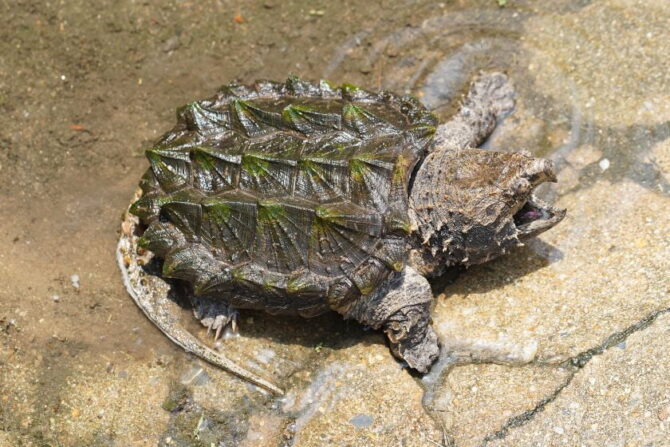
- Scientific name: Macrochelys temminckii
- Classification: Reptile
- Habitat: Aquatic
- Diet: Omnivore
- Where found: United States of America
The Alligator Snapping Turtle is one of the most endangered species in the world.
The last remaining ones are now in wildlife conservation because experts are afraid that if humans keep hunting them for their shells and meat, there wouldn’t be anyone else left for the next generation to see.
This animal is an omnivore. It is sneaky because it attracts fish to itself by sticking out its tongue and camouflaging with its environment when it hunts.
This way, one or two curious fishes will come to check it out. And when they come around, it snatches them to eat.
3. Alligator
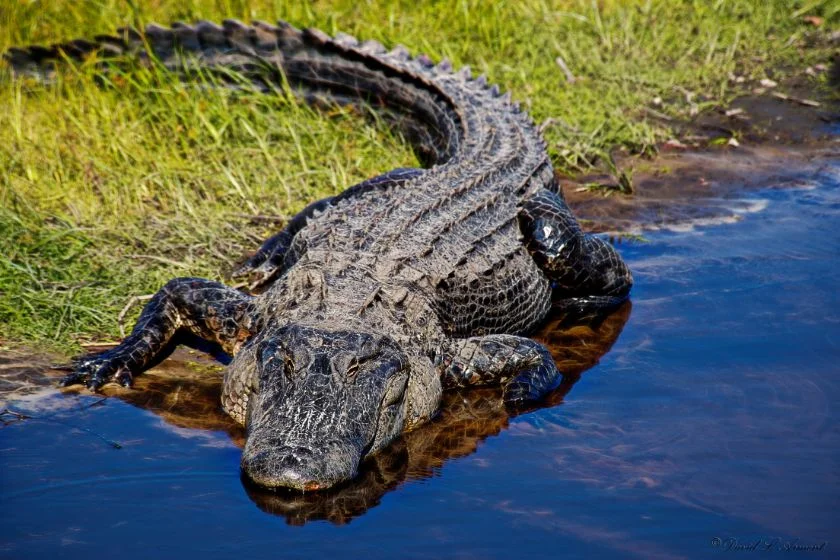
- Scientific name: Alligator mississippiensis
- Classification: Reptile
- Habitat: Aquatic
- Diet: Carnivore
- Where found: America and China
Alligators are closely related to crocodiles. They live in shallow rivers and come out from time to time to bask in the sun, like gharials.
They are carnivores and excellent hunters at that. The alligator is sneaky because it hunts at night when predators and prey cannot easily spot it.
It sneaks up on its prey, and when they’re less alert, it bites them and drags them into the water.
4. Black Mamba
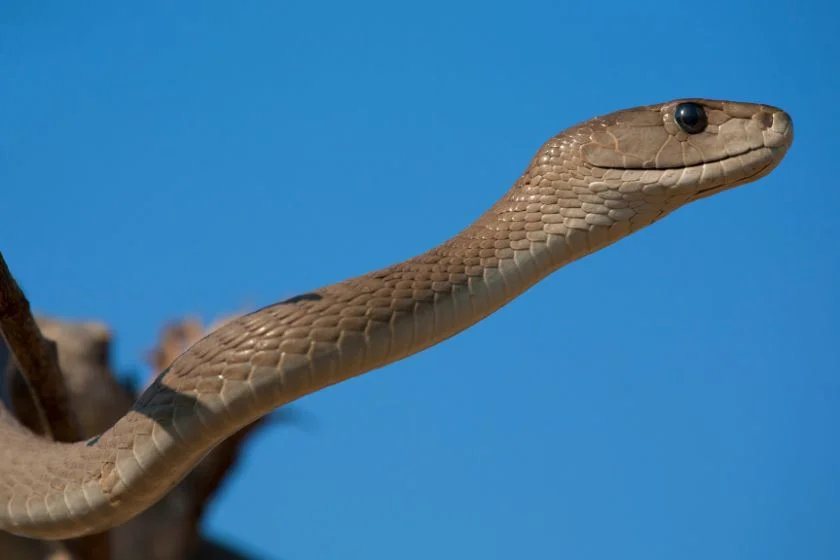
- Scientific name: Dendroaspis polylepis
- Classification: Reptile
- Habitat: Terrestrial
- Diet: Carnivore
- Where found: Southern and Eastern Africa
Black mambas were named as a result of a defense mechanism they have towards predators.
When threatened by a possible predator, they display the insides of their mouths which are blue-black. In reality, Black mambas are brown.
They are among the deadliest snakes in Africa, and they normally grow to about 14 feet.
Black mambas are carnivores, and they do well to hunt their food using the one advantage— amongst other things— that snakes have over other animals; their venom.
They can be sneaky when they want to be and attack unsuspecting prey, killing them and swallowing them whole.
5. Cats
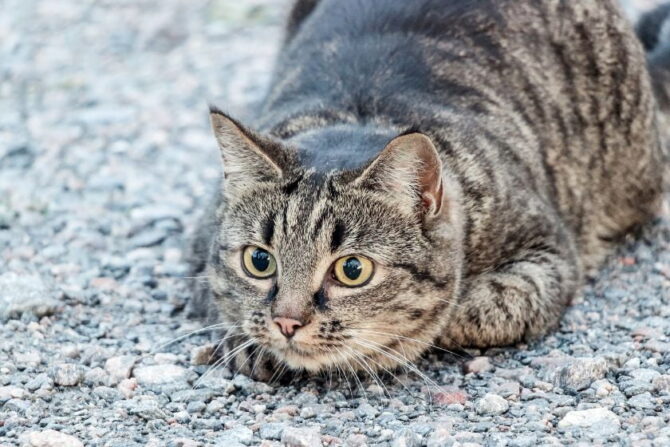
- Scientific name: Felis catus
- Classification: Mammals
- Habitat: Terrestrial
- Diet: Carnivore
- Where found: Cats have been domesticated and can be found anywhere. But there are more cats in the Afghan Pamir than in other parts.
Cats are domesticated animals; today, you can find a cat anywhere. They are stealthy and quiet.
They move through most of their day in silence and with observation.
These animals are natural hunters, even though they now live in homes with people.
This hunting trait is revealed when they are left outside their owners’ sight for a second; some return with a few birds, and some return with fish.
6. Chameleons

- Scientific name: Chamaeleonidae
- Classification: Reptile
- Habitat: Arboreal
- Diet: Omnivore
- Where found: A larger concentration is found in Africa
Chameleons are most popular for their ability to change their colors, but there are many other things to learn about this fascinating animal.
Camouflaging is a defense mechanism they use while hiding from predators and hunting for prey.
Chameleons do not move around during hunting; they use their ability to camouflage to blend into trees so that when unsuspecting insects fly around, they’ll use their long tongues to snatch them into their mouths.
Statistics show that over 200 species of chameleons are in the world, and out of that number, 76 are found only in Madagascar, east of Africa.
7. Black Panther

- Scientific name: Panthera pardus
- Classification: Mammal
- Habitat: Arboreal, Terrestrial
- Diet: Carnivore
- Where found: Asia and Africa
Black panthers are a general term for big cats with black coats; there are no particular species of animal called the black panther.
This animal is a stealthy and dangerous hunter because it is highly nocturnal.
This character is bad for their prey because their skin makes it hard to spot them around as they wait for animals to prey on at night.
It’s even harder to spot them, so they hunt mostly during the day.
They hide behind the trees and wait for prey, and when they find one, they ambush it, chasing it if need be and killing it.
After this, they drag the animal with their jaws and climb the trees where they consume it.
8. Cheetah
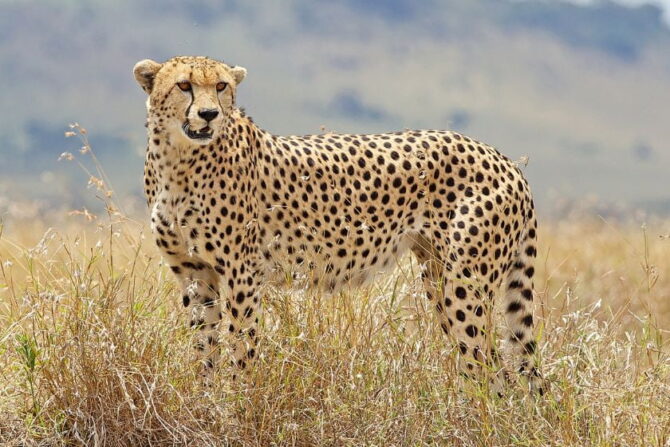
- Scientific name: Acinonyx jubatus
- Classification: Mammal
- Habitat: Terrestrial
- Diet: Carnivore
- Where found: Eastern and Southern Africa, Iran
Cheetahs are the fastest land mammals in the world. They are stealthy and dangerous because they tail their prey for long so they can get close enough.
And when they come close enough, they start chasing them. Cheetahs can run for 70 miles/hr, a disadvantage to their prey.
If the chase goes according to their favor and they catch the animal, they kill it and start eating it immediately.
Cheetahs do not leave a kill and return to it; they only eat fresh food.
Cheetahs can’t roar too, they can only purr, so it’s very hard to know when a Cheetah is close by.
9. Crocodiles

- Scientific name: Crocodylidae
- Classification: Reptile
- Habitat: Aquatic
- Diet: Carnivore
- Where found: Central Africa, Australia, and Southeast Asia
Crocodiles are stealthy and sneaky when they’re hunting for prey.
They do not come out fully when they hunt but stick their eyes out to watch their prey, mostly animals that come to the riverbank to drink water or rest.
When they’re less alert, they stalk their prey and bite it on its leg and drag it into the water to drown it.
When it’s drowned, they bite off large chunks of meat from the prey and swallow.
10. Crowned Eagles
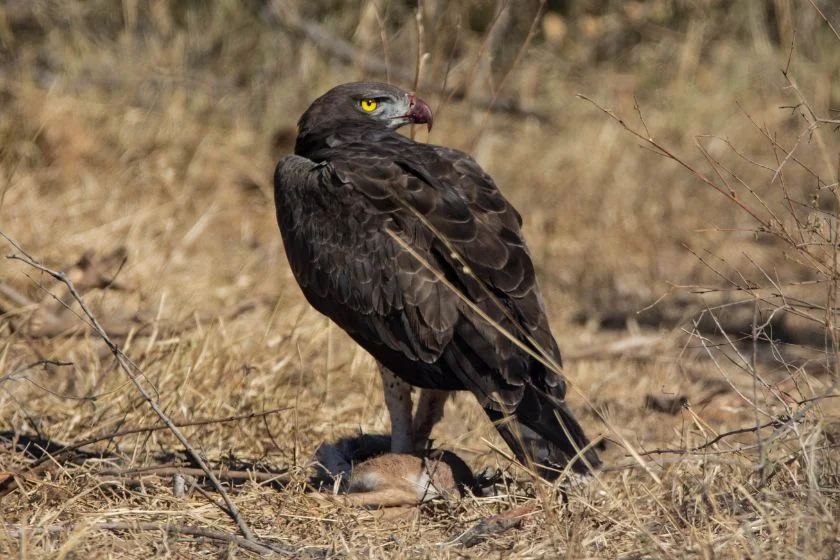
- Scientific name: Stephanoaetus coronatus
- Classification: Bird
- Habitat: Arboreal
- Diet: Carnivore
- Where found: Southeastern and Central Africa
Big female birds naturally weigh more than their male contemporaries, and it’s no different for the Crowned eagle.
When they hunt for prey, they hover unsuspectingly around it, and when the eagles see an opening, they strike the back of its neck and kill it.
After they’ve killed the animal, they carry it to their nest so the family can feast on it.
Crowned Eagles don’t chase after prey; their females also do more hunting than the males.
11. Ethiopian Wolf
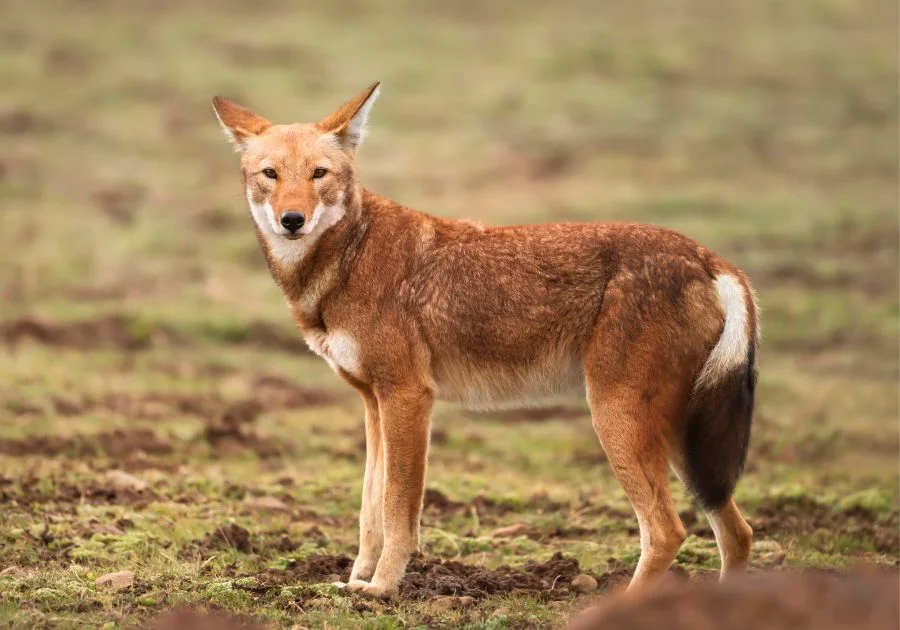
- Scientific name: Canis simensis
- Classification: Mammal
- Habitat: Terrestrial
- Diet: Carnivore
- Where found: Ethiopia
As its name implies, this animal exists only in Ethiopia, a country in Africa. It is a carnivore and hunts for food in the habitat where it lives.
Like most wolves, these hunt in packs. They lay in wait for prey to come, blending in their environment due to their burnt orange furs.
And when the prey comes, they attack and kill it before sharing it.
12. Eurasian Eagle Owl

- Scientific name: Bubo bubo
- Classification: Bird
- Habitat: Arboreal
- Diet: Carnivore
- Where found: Europe, Asia, and the Middle East
This animal is sneaky because it is nocturnal and hunts at night when it can’t be easily seen.
They use their hearing and keen eyesight to find animals at night.
When they find their prey, they swoop down on it and snatch it from the ground with their feet.
These owls are top predators because they do not get hunted by any animal; all the threats to their survival come from humans.
13. Golden Eagle
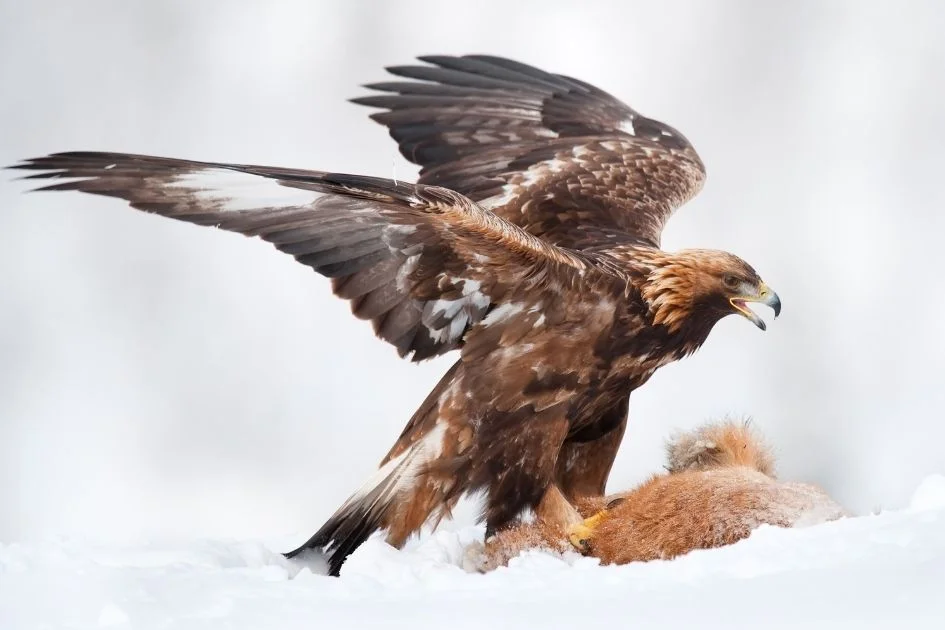
- Scientific name: Aquila chrysaetos
- Classification: Bird
- Habitat: Arboreal
- Diet: Carnivore
- Where found: North America, Mexico especially.
Golden eagles are sneaky because they work in pairs and deceive their prey.
When they hunt, one eagle starts the chase, leading the prey out of the eyeshot of the other animals and into their net.
And when it succeeds, the other one lands a striking blow to its neck and kills it instantly.
When they kill the prey, they carry it off with their feet to their nests, where they eat it with their beaks. Discover how much weight an eagle can carry.
14. Gharial
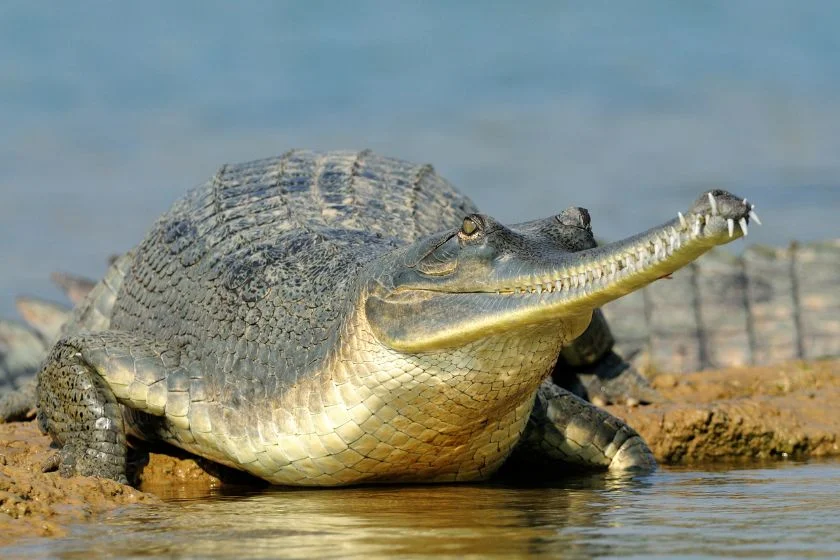
- Scientific name: Gavialis gangeticus
- Classification: Reptile
- Habitat: Aquatic
- Diet: Carnivore
- Where found: India and Nepal
The gharial is closely related to the crocodiles and is built similarly, except that gharials have long mouths.
Like crocodiles, they stay in shallow waters and only come out when they want to bask in the sun.
While in water, they stay hidden and try to detect the position of other animals with the sensory cells in their snout.
When they detect an animal close to them, they whip their heads to the side and grab them in their jaws where their sharp teeth are.
15. Goliath Heron
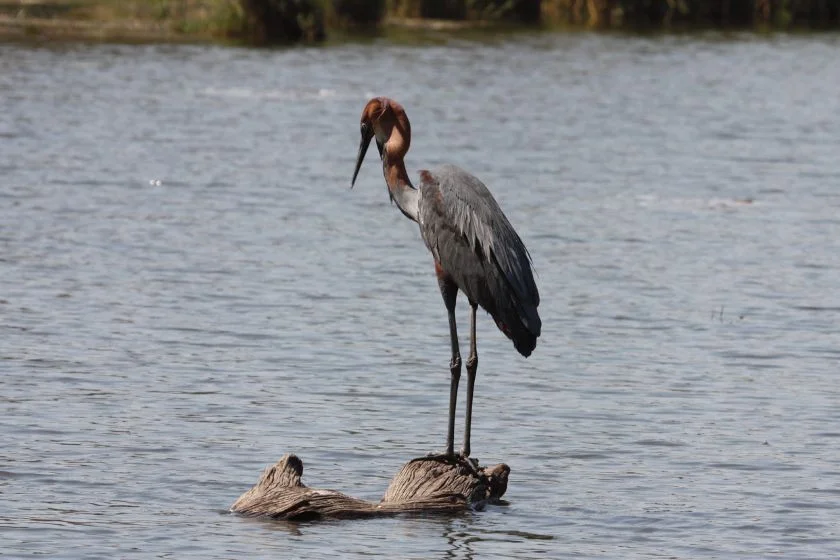
- Scientific name: Ardea goliath
- Classification: Bird
- Habitat: Terrestrial
- Diet: Carnivore
- Where found: Sub-Saharan Africa and Southeast Asia
The Goliath Heron is a big bird that lives on land instead of trees like other birds.
It is highly territorial and does not allow other herons to enter its feeding territory.
This animal is stealthy because it waits quietly and diligently for prey to swim past.
And when they find their prey, they pierce through it with their bills and hit it against the rock to kill it, or they pick it up with their bills and swallow it whole.
16. Frogfish
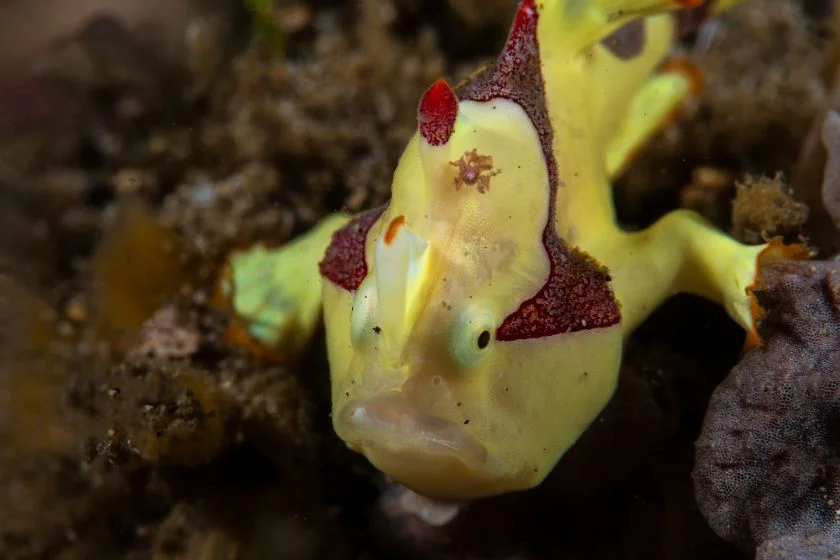
- Scientific name: Antennariidae
- Classification: Fish
- Habitat: Aquatic
- Diet: Carnivore
- Where found: Atlantic, Pacific, Indian Ocean, and Red sea.
The Frogfish is one of the weirdest fishes in the sea and very sneaky too.
Because of its ability to camouflage into any environment, it doesn’t exactly need speed to capture any animal.
It sits and waits for smaller fishes to swim past while blending its colors to resemble that of the coral reefs so that it can pounce on them.
It eats fast and can expand its mouth to eat even longer prey.
17. Great White Shark
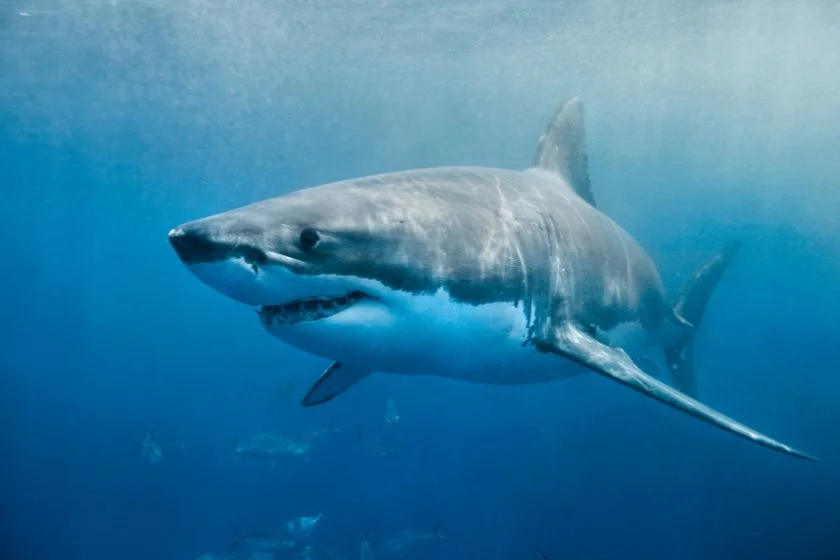
- Scientific name: Carcharodon carcharias
- Classification: Fish
- Habitat: Aquatic
- Diet: Carnivore
- Where found: Africa, Asia, and North America
This animal is highly carnivorous and feeds on other sea animals like itself, even the huge ones. It feeds on seals, fishes, and even whales.
These animals are stealthy and dangerous because they tail their prey until they see an opening.
They rush forward to attack and bite when they get the opening.
18. Harpy Eagle
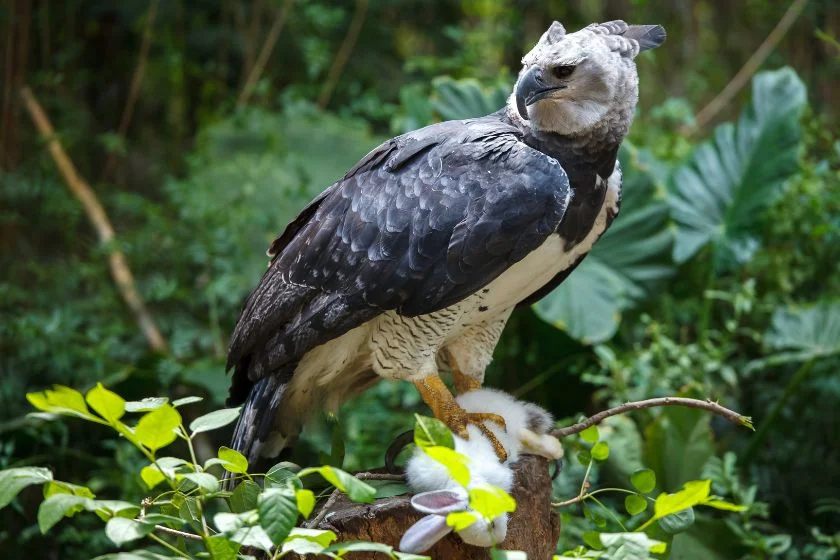
- Scientific name: Harpia harpyja
- Classification: Birds
- Habitat: Arboreal
- Diet: Carnivore
- Where found: Central and South America
The harpy eagle is the most powerful eagle in the world. It uses its claws to hunt for food for itself and its family.
Harpies feed on animals that live on trees, such as monkeys, sloths, and opossums. The females prey on bigger animals, while the males take on smaller ones.
When hunting, they hide in trees and watch their prey from a distance, waiting for the right time to attack.
When presented with an opportunity, they take it, flying down swiftly to strike a blow to their victim’s skull, killing it instantly. After the kill, they carry it to their nests with their feet.
19. Harris’s Hawk
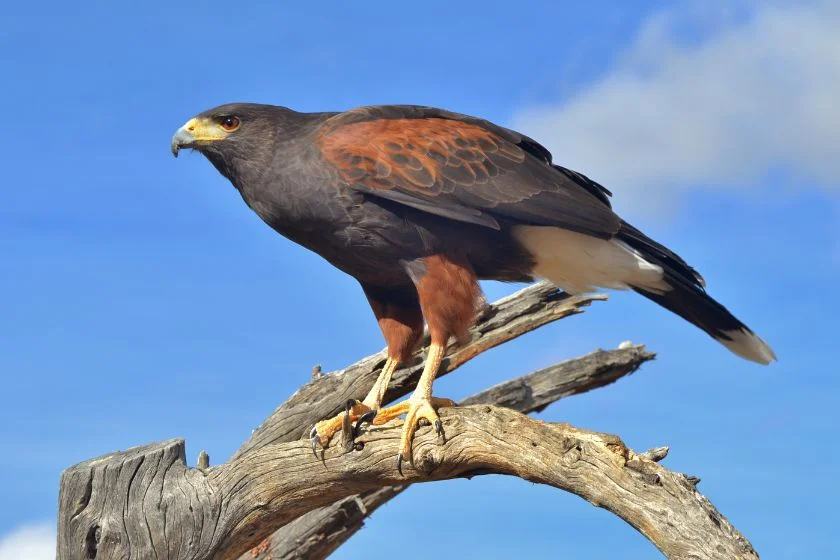
- Scientific name: Parabuteo unicinctus
- Classification: Bird
- Habitat: Arboreal
- Diet: Carnivore
- Where found: Southwestern America
Harris’s hawks were named this by John James Audubon, after his friend, Edward Harris.
These animals hunt in groups, tailing their prey until they reach it. When they do, they now begin to take turns chasing it.
Amid the brawl, they strike a death blow to the animal and kill it. Then they share it and carry it to their nests with their feet.
20. Foxes

- Scientific name: Vulpes vulpes
- Classification: Mammal
- Habitat: Terrestrial
- Diet: Omnivore
- Where found: Africa, Europe, and Asia
Foxes are very sneaky and cunning animals. They are stealthy because they stand on trees and track prey with their keen sense of smell and good eyesight.
They watch their prey for a long time before pouncing on them from above.
This technique is called mousing, and the fox is one of the very few animals that engage in this kind of hunting.
21. Killer Whale

- Scientific name: Orcinus orca
- Classification: Fish
- Habitat: Aquatic
- Diet: Carnivore
- Where found: All oceans
Killer whales feed on a variety of animals in the sea. It feeds on other sea mammals like itself and is at the top of the food chain.
They tail their prey too and sometimes work together in teams to kill them.
Also, they use techniques like beaching to catch larger prey like sea lions and sharks.
22. King Cobra

- Scientific name: Ophiophagus hannah
- Classification: Reptile
- Habitat: Terrestrial, Arboreal
- Diet: Carnivore
- Where found: Predominantly Asia
These snakes are stealthy and dangerous hunters. They hunt by striking their prey with their venom, their greatest weapon, both when they hunt and when they are being hunted.
When they hunt, they go for rodents and fleshy animals.
They release their venom into the body of their prey and swallow them whole because they have no limbs which they can tear their prey apart with.
23. Leaf Tail Geckos
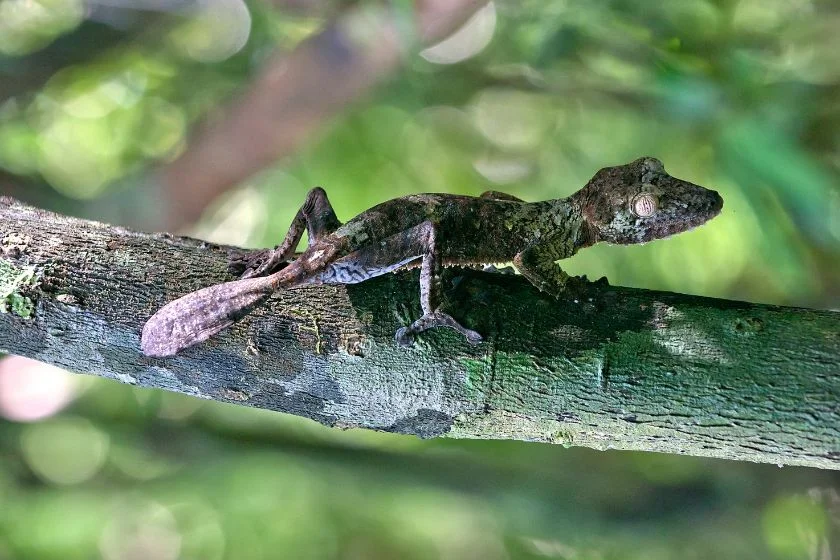
- Scientific name: Uroplatus phantasticus
- Classification: Reptiles
- Habitat: Arboreal
- Diet: Carnivore
- Where found: Madagascar
This rare animal is endemic to Madagascar, an island in Africa; it is not found anywhere else in the world.
The leaf tail gecko is an expert at camouflaging because of how its body is built.
At night, which is the time when it hunts for prey the most, it hides among leaves to hunt prey.
This animal feeds on insects, not birds; it is a small animal.
24. Leopards

- Scientific name: Panthera pardus
- Classification: Mammal
- Habitat: Terrestrial
- Diet: Carnivore
- Where found: Africa and Asia
The leopards don’t chase their prey; they work with the element of surprise. It is a stealthy hunter because it lies in wait and ambushes its prey.
It waits until the prey is close enough and unsuspecting, then it charges at it with a very high speed, dealing a blow to it.
The animal, weak from all the blood loss, cannot run away, so the leopard tears it apart and feeds on them.
25. Lions
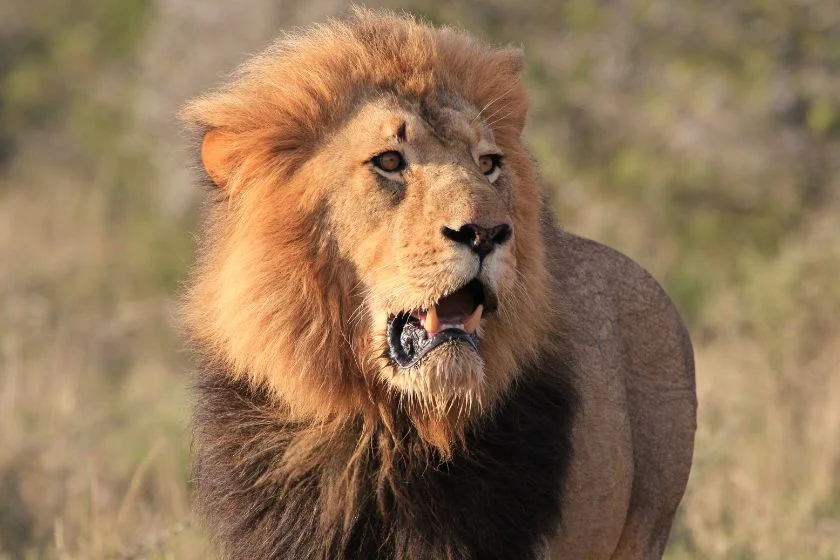
- Scientific name: Panthera leo
- Classification: Mammal
- Habitat: Terrestrial
- Diet: Carnivore
- Where found: Africa and Asia
The Lions have been referred to as the king of the jungle for so many years. It moves in pride packs and takes care of its young.
They are stealthy hunters that hunt by themselves or in packs.
When they hunt in packs, the males drive the prey towards the bushes where the lionesses lie, waiting to ambush the animal and tear it apart.
26. Octopuses

- Scientific name: Octopus vulgaris
- Classification: Invertebrate
- Habitat: Aquatic
- Diet: Carnivore
- Where found: In every ocean
They are huge and are very stealthy when they’re in their natural habitat.
Octopuses hunt mostly at night when their prey cannot easily see them.
When they hunt, they use their ink to distract and disorient their prey before they attack.
Also, the octopus has a beak which they use to inject venom into their prey before they wrap it in their web of arms.
27. Owls

- Scientific name: Strigiformes
- Classification: Bird
- Habitat: Arboreal
- Diet: Carnivore
- Where found: Nearly every environment in the world
Owls live on trees, but there’s a type of owl that lives underground called the burrowing owl.
They are nocturnal animals, and because of this, they hunt at night when other animals are asleep.
They have special eye vision that enables them to see at night, enabling their hunt.
As quiet as owls may seem, their sharp talons and hooked beaks are as dangerous as that of hawks and other big birds.
Because of these features, they hunt with so much efficiency and accuracy.
28. Snow Leopard

- Scientific name: Panthera uncia
- Classification: Mammal
- Habitat: Terrestrial
- Diet: Carnivore
- Where found: Asia and Europe
The Snow leopard is a type of big cat. This animal lives mostly in the mountains and rarely shows itself to the outside environment.
They can kill prey that is three times their weight. They hunt by stalking their prey and only attacking when they’re about 20 feet close.
They use the snow to their advantage and walk noiselessly toward their prey until they find an opening.
29. Tarantulas
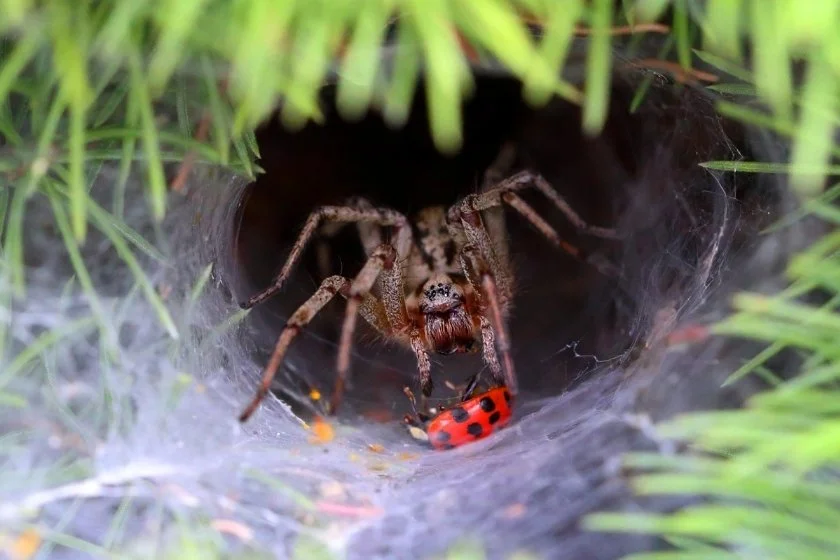
- Scientific name: Theraphosidae
- Classification: Arachnid
- Habitat: Arboreal
- Diet: Carnivore
- Where found: North and South America
Tarantulas can be very creepy. These spiders live in the ground as burrowers, but that doesn’t stop them from being a part of the hunting game.
They are nocturnal hunters and pursue their prey before biting it and injecting their venom into the prey’s system.
This venom is dangerous and contains a chemical that dissolves the prey’s flesh, making it easier for them to eat.
30. Tiger Shark

- Scientific name: Galeocerdo cuvier
- Classification: Fish
- Habitat: Aquatic
- Diet: Carnivore
- Where found: Subtropical waters throughout the world
It is named like this because of the stripes found on juveniles when they’re born, but these stripes tend to fade and become lighter as they age.
These sharks are excellent hunters and are stealthy too. They lay in wait for prey and catch them unaware as a result of their camouflage.
They depend on the element of surprise because they find it hard to chase prey.
31. Tigers

- Scientific name: Panthera tigris tigris
- Classification: Mammal
- Habitat: Terrestrial
- Diet: Carnivore
- Where found: Asia and Europe
Tigers are swift and excellent hunters. They are sneaky because they wait behind bushes, watching their prey.
When their prey is close enough, they strike by biting their necks to kill them.
When bitten, these animals lose the strength to fight; therefore, the Tigers win the battle and have a good meal.
Tigers eat at least one deer-sized animal every week.
32. Western Diamond Rattlesnake
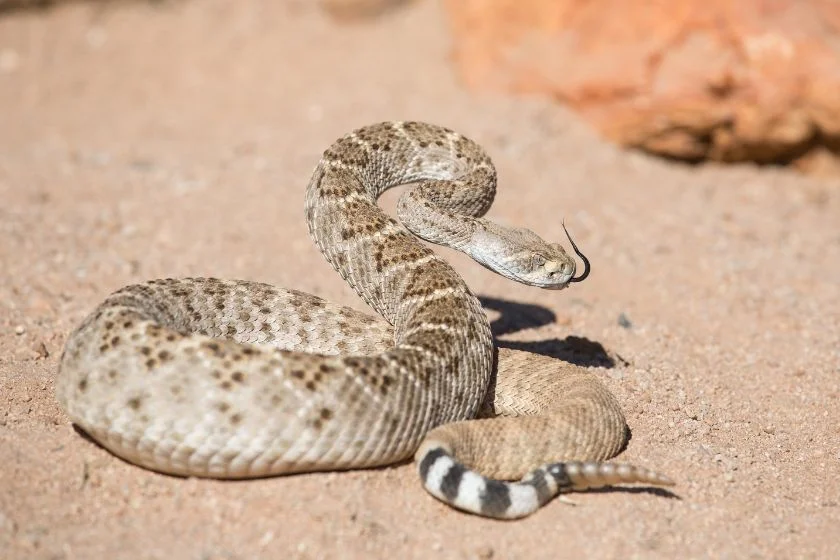
- Scientific name: Crotalus atrox
- Classification: Reptile
- Habitat: Terrestrial
- Diet: Carnivore
- Where found: United States of America
This snake is a natural stealth hunter and is good at hiding itself from its prey by camouflaging with its environment.
It is dark brown and can hide amongst leaves while it hunts.
It feeds on other animals, mostly rodents, by first paralyzing them with its venom and swallowing them whole, as is common among snakes.
The western diamond rattlesnake hunts at night when it can be less seen and can take on animals way bigger than itself.
33. Orchid Mantis

- Scientific name: Hymenopus coronatus
- Classification: Insect
- Habitat: Arboreal
- Diet: Carnivore
- Where found: Asia
The Orchid Mantis is a very small insect that lives on trees in the forests in Asia.
Also known as the flower mantis, this insect is known to be a very stealthy and fast hunter.
They feed on other insects and can even prey on their kind if it strays too close.
It is good at camouflaging and can do so easily among flowers because of its flower-like appearance.
34. Black Heron
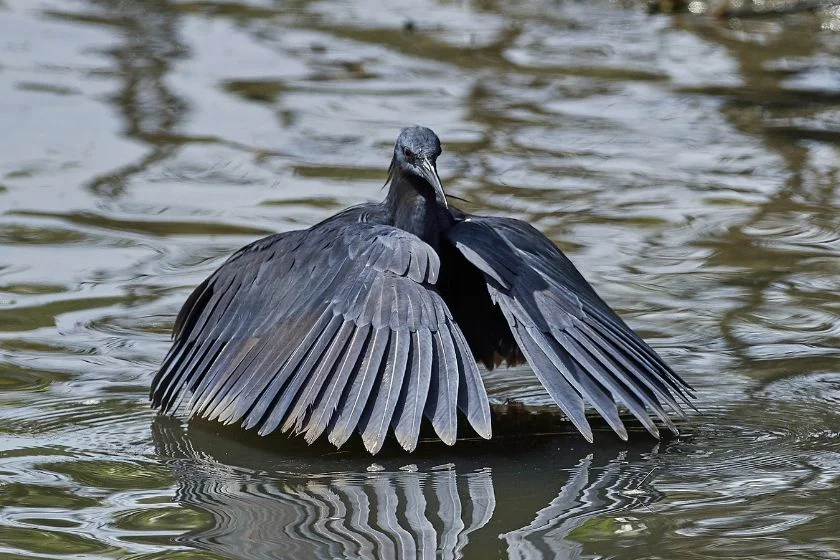
- Scientific name: Nycticorax nycticorax
- Classification: Bird
- Habitat: Arboreal
- Diet: Carnivore
- Where found: Africa and Europe
The black heron is a stealthy animal that deceives its prey. Black herons feed on animals with a type of feeding called canopy feeding.
They use their wings to make a canopy over the water and make it look like it is already nightfall.
And when curious fishes come out to check what is going on, they pick them up with their beaks and swallow them whole.
35. African Tigerfish

- Scientific name: Hydrocynus vittatus
- Classification: Fish
- Habitat: Lakes and large rivers
- Diet: Carnivore
- Where found: Throughout Africa
This animal is dangerous because of its teeth and the tales surrounding it.
It hunts in groups by laying an ambush for its prey and waiting for the right opportunity to strike.
The African tigerfish is stealthy and can also jump out to catch birds that fly close to the water.
It feeds on fish and other animals and can take on animals that are bigger than itself.
Wrap Up
In conclusion, some of these sneakiest creatures are among the most dangerous animals in the world.
So if you come across them in the wild, do well to protect yourself by taking extra precautions.
